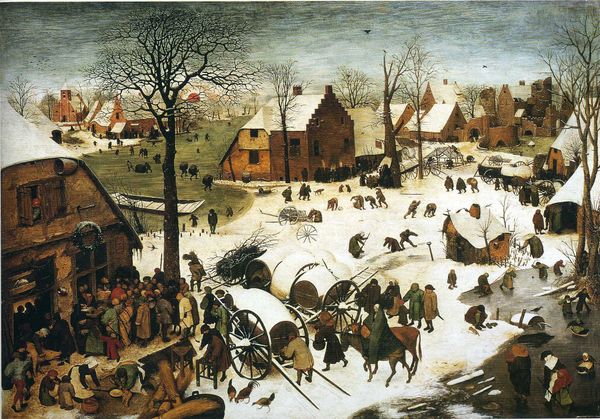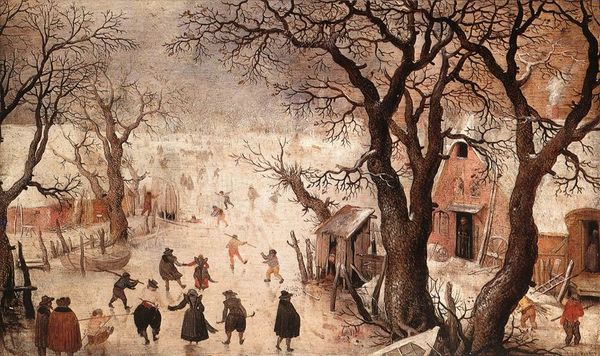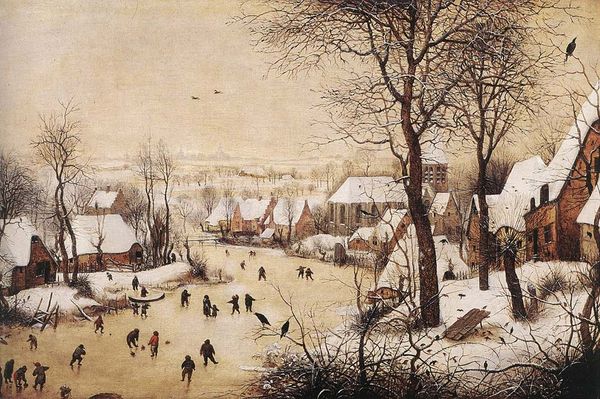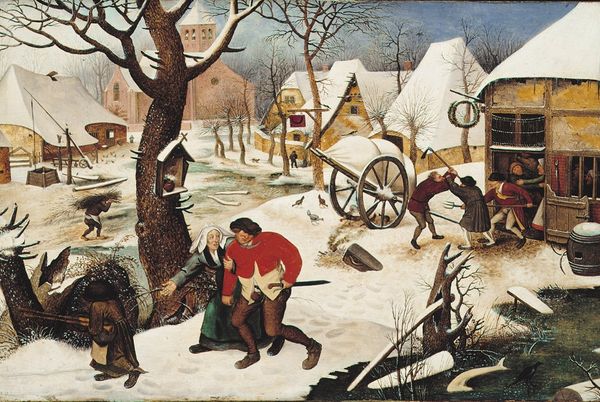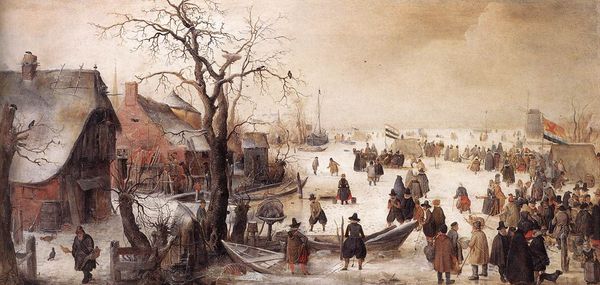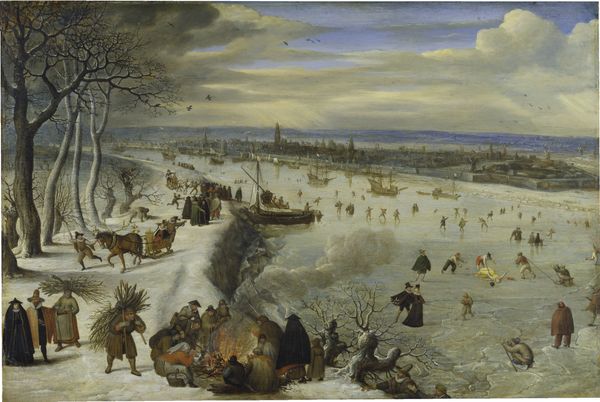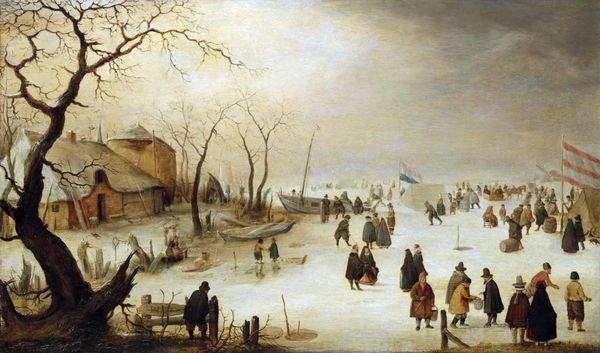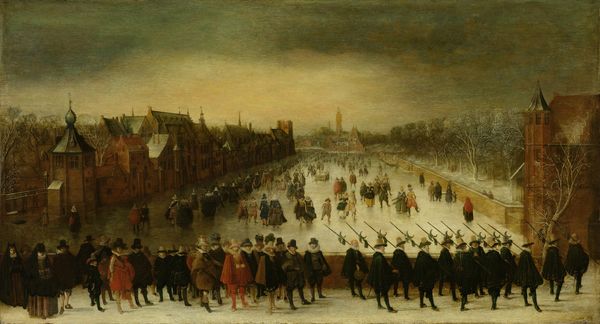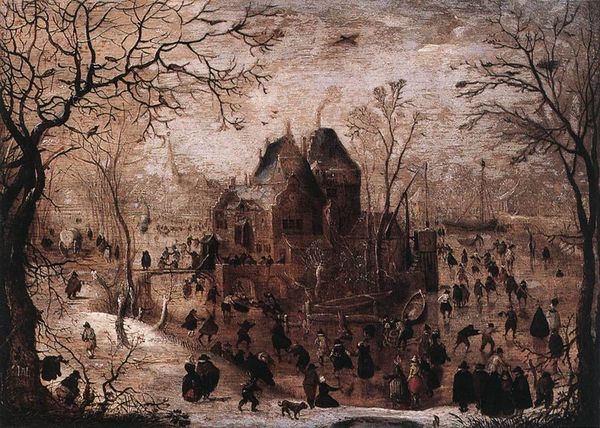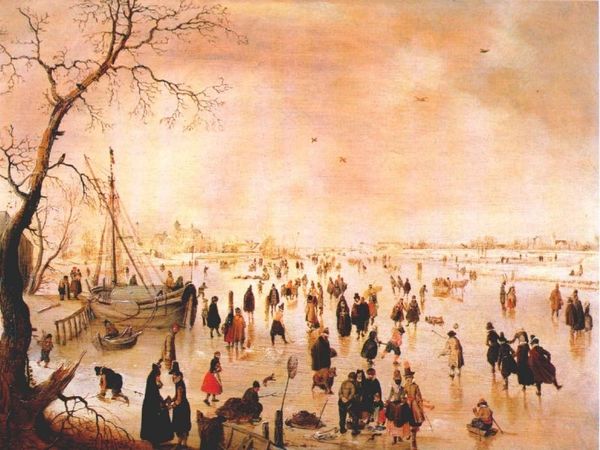
painting, oil-paint
#
narrative-art
#
painting
#
oil-paint
#
war
#
landscape
#
mannerism
#
figuration
#
christianity
#
genre-painting
#
history-painting
#
northern-renaissance
#
academic-art
#
realism
Dimensions: 109.2 x 158.1 cm
Copyright: Public domain
Curator: Looking at Pieter Bruegel the Elder’s oil on panel from 1566 entitled “The Massacre of the Innocents," it immediately strikes one as more of a chaotic village scene than a specific historical event. Editor: It’s… oddly beautiful for such a brutal subject, isn't it? The snow, the crisp light – it’s like a Christmas card gone horribly, horribly wrong. It feels so… contained. Curator: Contained is a great word. Bruegel masterfully uses the snowy landscape, seemingly idyllic at first glance, to amplify the horror unfolding. The soldiers, with their pikes and armor, become almost a natural disaster amidst the daily lives of these villagers. It mirrors cycles of violence throughout history, doesn’t it? The enduring trauma… Editor: Exactly. It's like, "oh, another Tuesday, another massacre." I am mostly stuck on those figures on the bottom right that seem like frozen shapes trapped in some sort of macabre choreography. The guy pleading… it feels hopeless and surreal. Curator: What's fascinating is how Bruegel transposed the biblical story to a 16th-century Flemish village. This wasn’t some distant historical event for the people who saw it. It resonated deeply with their own experiences under Spanish rule, the ever-present threat of violence. Editor: You know, I read somewhere that Bruegel actually painted over the original babies to look like various fowl and cheeses later on in his career so to conceal his historical and political critique, right? It's pretty interesting knowing it was meant to be concealed, and the modern gaze looking for its past meaning behind the symbolic gestures that make up a history-making massacre. Curator: A true act of visual defiance! He encoded his protest within a familiar scene. Think about it: the details of daily life – the buildings, the clothing, even the dogs – all grounded in a very specific time and place. The personal becoming irrevocably political. Editor: So it feels weird to say I admire a painting about infanticide but the artistry… the way he layers meaning and visual information is wild. You’re almost lulled into the ordinary only to be smacked in the face with the tragedy. That’s real artistry. Curator: I agree completely. It serves as a chilling reminder of the cyclical nature of violence and its impact on ordinary lives across generations and histories, both contemporary and not. Editor: Art for a post-truth world before its time... well said!
Comments
No comments
Be the first to comment and join the conversation on the ultimate creative platform.
